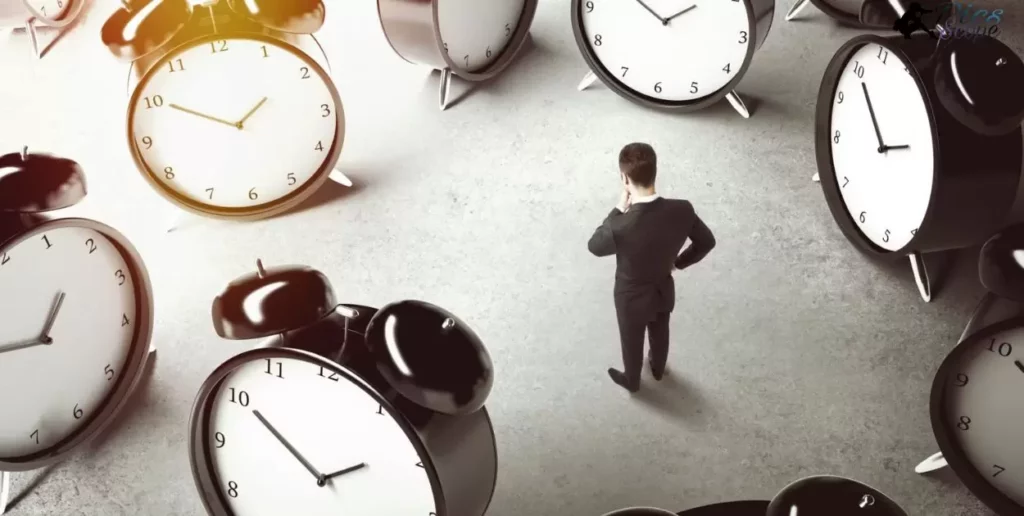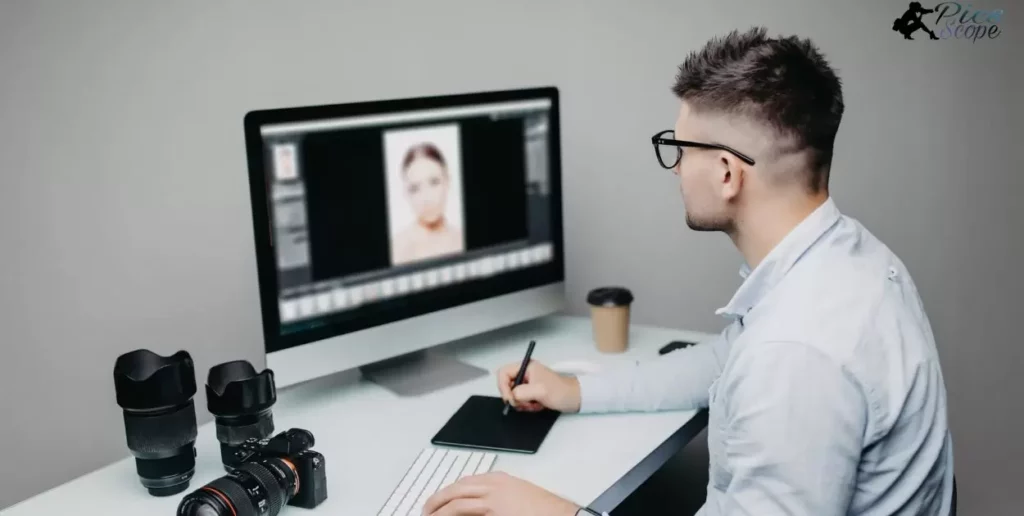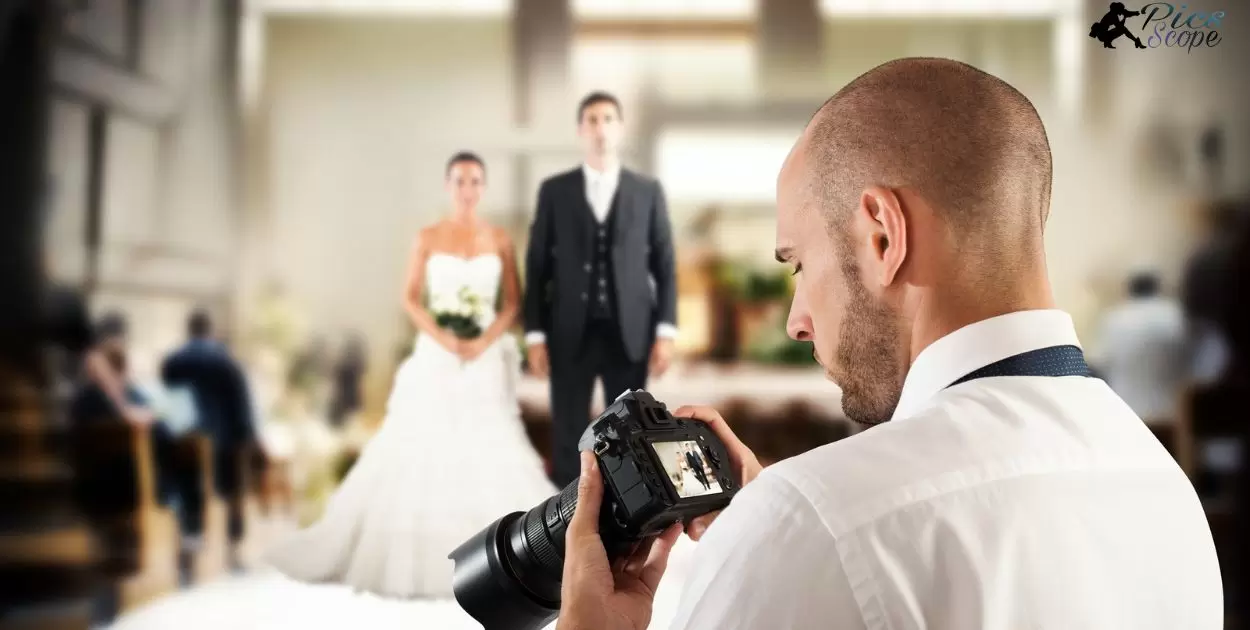Photography is the art of capturing images with a camera, using light to create visually appealing pictures. Beyond taking initial shots, post-production involves editing to enhance and refine the captured images.
How long do photographers take to edit photos? The duration varies based on factors like editing complexity and the photographer’s skill. Understanding this adds appreciation for the dedication photographers bring to their craft.
For efficient editing, organize files, use shortcuts, and master presets. Managing color correction and retouching requires a balance of precision and speed. These tips help optimize editing time and ensure the final results meet artistic vision and audience expectations.
Why is Photography Editing Time Important?
Photography editing time matters because it directly influences the final look of the images. Swift editing ensures timely delivery of polished photos, meeting client expectations and project deadlines. It’s a crucial aspect of maintaining a professional and efficient photography workflow.
When photography editing is quick and precise, it allows photographers to focus on capturing more moments. Timely delivery of edited photos also enhances customer satisfaction and builds a positive reputation in the competitive photography industry.
Factors Influencing Photography Editing Duration
Photography editing duration is influenced by factors such as the complexity of tasks and the photographer’s skill level. Efficiency in editing software, organizational workflow, and client communication also play crucial roles in determining the overall time required.
Complexity of Editing Tasks:
The complexity of the editing tasks involved plays a significant role in determining how long it takes to edit photos. Intricate edits, such as detailed retouching or intricate color correction, can extend the overall editing duration. Simplifying editing processes can help expedite the workflow.
Skill Level of the Photographer:
The skill level of the photographer directly affects editing time. Experienced photographers with advanced editing skills tend to work more efficiently, completing tasks quicker than those still mastering the tools. Continuous practice and skill development can contribute to faster editing turnaround.
Type and Number of Edits Needed:
The type and number of edits required for each photo impact the overall editing duration. Basic edits, like cropping or adjusting exposure, may take less time compared to more complex edits, such as compositing or intricate manipulation. Understanding the scope of edits helps in better time management.
Efficiency of Editing Software:
The efficiency of the editing software used is a crucial factor. Up-to-date and powerful editing tools can significantly reduce the time it takes to make adjustments and enhancements. Choosing the right software and staying familiar with its features contributes to a smoother and quicker editing process.
Organization and Workflow:
An organized workflow can streamline the editing process. Efficient file organization, clear workflow strategies, and the use of presets and templates contribute to a faster and more structured editing experience. Implementing effective organizational practices is essential for time-conscious photographers.
Client Communication and Feedback:
Timely communication with clients and understanding their feedback influence the editing duration. Clear communication helps photographers address client preferences efficiently, reducing the need for extensive revisions. Aligning expectations from the start contributes to a smoother editing workflow.
The Artistry of Photography Editing
Photography editing is an artistic process where photographers enhance and refine their captured images. It involves adjusting colors, contrast, and composition to bring out the desired visual impact. Skilled photographers use various techniques to transform raw photos into compelling works of art through the careful application of editing tools.
In the realm of photography editing, creativity plays a crucial role. Photographers express their unique artistic vision by manipulating elements within an image, whether it’s highlighting specific details or creating a mood through strategic adjustments.
How Long Does Basic Photography Editing Take?
Photography editing time varies based on the simplicity or complexity of the task. Basic editing, involving tasks like cropping and adjusting brightness, often takes a shorter duration. Photographers can complete these edits swiftly, ensuring a quick turnaround for simpler projects.
For straightforward edits, such as basic retouching and color adjustments, photographers can expect a faster workflow. The simplicity of these tasks allows for efficient handling, making basic photography editing a relatively quick process in the overall production of captivating images.
How long does it take a professional wedding photographer to edit 50 photos?
Professional wedding photographers usually take around 2 to 3 weeks to edit 50 photos. They carefully enhance each image, adjusting colors, brightness, and sharpness to ensure the final pictures capture the beauty of the special day. The time frame may vary based on the photographer’s workload, editing style, and the level of detail required for each photo.
Factors such as the photographer’s familiarity with editing tools and their efficiency in post-production play a significant role. With experience, photographers can streamline the editing process, providing clients with stunning wedding photos in a reasonable time frame.
How long does it take to edit 100 photos?
Editing 100 photos varies in time, depending on your speed and the complexity of the edits. On average, skilled photographers may take a couple of hours for basic edits. The process involves adjusting colors, cropping, and fine-tuning details to ensure each photo meets your desired quality.
Factors like familiarity with editing tools and the level of detail in each photo influence the time needed. With practice, you can improve your efficiency and reduce the time spent editing a batch of photos. Keep refining your skills to streamline the process and achieve quicker turnaround times.
How long does it take a photographer to edit wedding photos?
Photographers typically spend several hours editing wedding photos. They carefully adjust colors, enhance details, and ensure each image captures the joyous moments of the special day.
The editing process involves tasks such as cropping, adjusting exposure, and refining the overall composition. Photographers may also apply filters and correct any imperfections to create a polished and memorable collection of wedding photos.
How long does it take photography to edit engagement photos?
Photographers typically spend several hours editing engagement photos to ensure they capture the couple’s special moments beautifully. The time taken varies based on factors such as the number of photos, the desired level of retouching, and the photographer’s editing proficiency.
Engagement photo editing involves tasks like color correction, cropping, and enhancing details. Photographers aim to deliver high-quality images promptly, but the duration depends on the complexity of the editing process and the photographer’s efficiency in handling post-production tasks.
How long does it take a photographer to send photos?
Photographers typically send photos within a few days of capturing them. The time it takes depends on factors like the photographer’s workload and the number of photos taken. The process involves sorting, selecting, and editing images before they are ready for delivery.
To speed up the photo delivery, some photographers use efficient workflow techniques. They prioritize organization, optimize editing processes, and manage their time effectively. By employing these strategies, photographers can ensure timely delivery of high-quality photos to their clients.
How long does it take to edit a family photo shoot?
Editing a family photo shoot typically takes a few hours. Photographers go through each image, adjusting colors and fixing minor imperfections. The time depends on factors like the number of photos and the desired level of enhancement.
The process involves tasks such as cropping, adjusting brightness, and ensuring a cohesive look. Photographers who are efficient with editing tools can complete the task more quickly. It’s all about finding the right balance between precision and speed to deliver a polished and appealing family photo collection.
Photography Editing,Balancing Quality and Efficiency
Photography editing involves enhancing and refining captured images to achieve the desired results. To strike a balance between quality and efficiency, photographers employ various techniques. They optimize their workflow, utilize editing software efficiently, and implement smart strategies to ensure that the final photos meet their artistic vision while minimizing editing time.
Choosing the right tools and mastering shortcuts can significantly speed up the editing process without compromising the quality of the images. Photographers prioritize a systematic approach, organizing files, and utilizing presets to streamline tasks. Asian Giant Hornets Have Photographic Memory
Optimizing Photography Editing Workflow Techniques
- File Organization: Begin by systematically organizing your image files. Create folders with clear labels and structures to streamline access to specific photos.
- Shortcut Mastery: Learn and master keyboard shortcuts in your chosen editing software. This can drastically reduce the time spent navigating menus and enhance your overall efficiency.
- Utilize Presets: Take advantage of presets for repetitive tasks. Presets can be applied for color correction, filters, and other consistent adjustments, saving time and ensuring consistency across multiple images.
- Batch Editing: When possible, use batch editing features to apply similar adjustments to multiple images simultaneously. This helps maintain uniformity and accelerates the editing process.
- Efficient Color Correction: Focus on precise color correction techniques to enhance the overall quality of your images. Efficient color correction contributes to a polished final product.
- Strategic Retouching: Prioritize retouching based on the importance of each element in the photo. This strategic approach allows you to allocate time effectively and enhance key components.
- Regular Backups: Implement a backup routine to prevent the loss of edited work. Regularly saving versions of your edited photos ensures that you can revert to previous stages if needed, providing a safety net for experimentation.
- Hardware Optimization: Ensure that your computer and editing software are optimized for performance. Upgrading hardware components, such as RAM or graphics cards, can significantly improve processing speed.
- Continuous Learning: Stay updated on the latest features and techniques in your editing software. Continuous learning allows you to adapt to new tools that may further optimize your workflow.
- Feedback Integration: Incorporate feedback loops into your editing process. Regularly reviewing your work with fresh eyes or seeking input from peers can provide valuable insights for improvement.
- Time Management: Set realistic time goals for each editing session. Efficiently managing your time helps maintain focus, preventing unnecessary delays in completing your editing tasks.
What Role Does Skill Play in Photography Editing Time?
Photography editing time depends significantly on the photographer’s skill level. Skilled photographers adeptly navigate editing software, swiftly applying enhancements. Proficiency in techniques like color correction and retouching enables quicker, more precise adjustments, reducing overall editing time.
Novice photographers may find editing to be more time-consuming. Learning the nuances of editing tools and techniques takes practice. As skills develop, the efficiency of the editing process improves, showcasing the direct impact of skill on the time required for photography editing.
Photography Editing Software and Time Management

Photography editing software plays a crucial role in the efficient management of time for photographers. These tools, such as Adobe Lightroom and Photoshop, provide user-friendly interfaces and quick access to essential editing features.
With intuitive controls, photographers can swiftly navigate through adjustments, making the editing process more streamlined and less time-consuming. By mastering the features of photography editing software, photographers can significantly enhance their time management skills.
Learning keyboard shortcuts, utilizing presets, and familiarizing oneself with the software’s functionalities allow for a more fluid editing workflow. This hands-on approach empowers photographers to optimize their time, ensuring that the editing process is not only effective but also a seamless part of their creative expression.
Exploring Advanced Photography Editing Techniques
In the realm of photography, advanced editing techniques open new dimensions of creative expression. These methods go beyond basic adjustments, allowing photographers to refine their craft and produce truly exceptional images.
| Editing Technique | Description |
| Frequency Separation | Enables precise skin retouching and texture enhancement. |
| HDR (High Dynamic Range) | Combines multiple exposures for stunning tonal and color range. |
| Color Grading | Fine-tunes colors to evoke specific moods and enhance visual appeal. |
| Composite Imagery | Integrates elements from multiple photos to create a seamless composition. |
| Lens Distortion Correction | Corrects distortions caused by different lenses, enhancing overall image quality. |
Advanced photography editing techniques empower photographers to transcend traditional boundaries. Techniques like frequency separation enable intricate detailing, while HDR captures a broader spectrum of light.
Color grading adds a personalized touch, and composite imagery allows for the creation of visually captivating stories. Lens distortion correction ensures the accuracy of the captured scene. Mastering these techniques enhances a photographer’s ability to convey nuanced narratives and achieve artistic excellence.
Is Photography Editing a Time-Consuming Process?
Photography editing can be time-consuming. Photographers invest hours refining images to achieve the desired results. The process involves adjusting colors, enhancing details, and perfecting composition, demanding both skill and dedication.
To determine if photography editing is time-consuming, consider factors like image complexity and the photographer’s proficiency. Experienced photographers often streamline their workflow, using efficient techniques and tools to optimize the editing process.
Photography Editing Tips for Faster Results
Looking to speed up your photo editing? Start by organizing your files logically. Sorting images into folders helps locate them quickly, saving precious time during the editing process.
Mastering keyboard shortcuts is another game-changer. Familiarize yourself with the essential commands to navigate through your editing software efficiently. These simple tips can significantly cut down the time you spend on editing, ensuring faster and more streamlined results.
The Impact of Image Complexity on Photography Editing
Image complexity significantly influences how long photographers take to edit photos. Simple and well-lit images with minimal elements generally require less time for adjustments. In contrast, intricate scenes, varying lighting conditions, and diverse textures demand meticulous editing, extending the overall editing duration.
Photographers often find that managing image complexity involves fine-tuning details like color correction, retouching, and handling intricate backgrounds. The more intricate the image, the more time and precision are necessary to achieve the desired final result.
Recognizing the impact of image complexity helps photographers approach their editing process with a clear understanding, ensuring the necessary time is allocated for each project.
Does the Type of Photography Affect Editing Time?
| Type of Photography | Editing Time Impact |
| Portrait Photography | May require detailed retouching, affecting editing time. |
| Landscape Photography | Editing time influenced by varied lighting and intricate scenes. |
| Product Photography | Focus on precise color correction may impact editing duration. |
| Event Photography | Quick turnaround often needed, affecting editing efficiency. |
| Macro Photography | Editing may involve intricate details, potentially increasing time. |
| Fashion Photography | Extensive retouching can lead to longer editing durations. |
| Wildlife Photography | Complex backgrounds may require additional time for adjustments. |
| Street Photography | Editing time influenced by the dynamic nature of street scenes. |
| Aerial Photography | Perspectives and lighting conditions impact editing requirements. |
| Food Photography | Detailed color correction and retouching may affect editing time. |
Note: The impact on editing time can vary based on individual preferences and the specific requirements of each photographer.
Strategies to Reduce Photography Editing Turnaround Time

Photographers can employ practical strategies to cut down on the time it takes to edit photos. One effective approach involves organizing files systematically, making it easier to locate and work on specific images without unnecessary delays.
Utilizing keyboard shortcuts and presets in editing software can significantly speed up the overall process, allowing photographers to achieve efficient results without sacrificing quality. Mastering the art of batch processing can be a game-changer in reducing photography editing turnaround time.
By applying similar edits to a group of images simultaneously, photographers save valuable minutes that would otherwise be spent on repetitive tasks. These streamlined strategies not only enhance productivity but also contribute to a more enjoyable and time-effective editing experience for photographers.
FAQ’s
How quickly can photographers deliver pictures to clients?
Photographers aim to provide timely turnaround, typically within a specified timeframe agreed upon with the client.
What is the average time spent on editing a photo?
The duration varies based on factors like complexity, but skilled photographers efficiently manage their time, ensuring a balance between speed and quality.
How long does photo retouching usually take?
Retouching time depends on the extent of adjustments needed; it can range from a few minutes for basic retouching to more time-intensive processes for detailed enhancements.
How many edited photos can be expected from a single photoshoot?
The number varies based on the photographer’s style and the shoot’s nature, but clients can usually expect a carefully curated set of edited photos highlighting the best moments.
Conclusion
Understanding how long photographers take to edit photos sheds light on the meticulous process that goes into perfecting captured moments. Photographers employ various strategies, from efficient file organization to the use of shortcuts and presets, to streamline their editing workflow.
This insight not only fosters appreciation for the dedication and skill photographers bring to their craft but also empowers them to optimize their time and deliver high-quality, visually stunning results to their clients.
As we explore the dynamic world of photography, it becomes clear that the art extends beyond the initial click of the camera. The commitment to enhancing and refining images through meticulous editing speaks to the craftsmanship inherent in photography.
By recognising the time and effort invested in this post-production phase, we gain a deeper appreciation for the intricate balance photographers strike between creativity, efficiency, and delivering a final product that resonates with both their artistic vision and the expectations of their audience.







